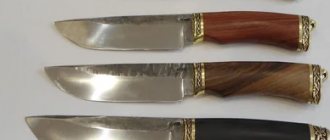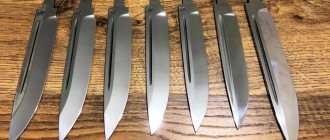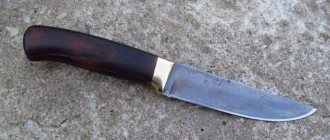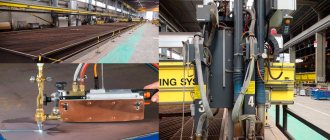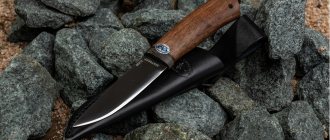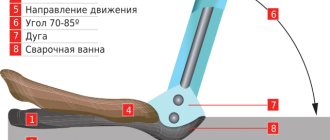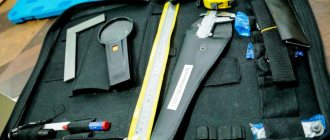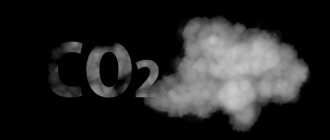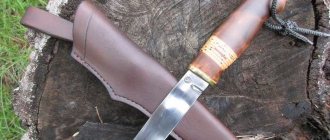All types of rolled metal are subject to marking, which contains information about the composition of the alloy, the content of additives, quality, and degree of deoxidation. If there is no such mark or an old metal structure is used, then the question arises of how to determine the grade of steel without laboratory testing. The grade of the alloy is determined by the qualitative and quantitative chemical composition and its hardness. If you know exactly these two indicators, you can accurately identify the metal.
The chemical composition shows the base metal, alloying and general characteristics. And hardness depends on production technology and additional processing.
In laboratory and production conditions, X-ray fluorescence spectrometry, large-metric titration, test cutting methods, and testing on an emery wheel are used. Some methods can be used for independent analysis.
Types and grades of non-magnetic steels
If the origin of the product is known, the reaction with a magnet can roughly determine the type of stainless steel. The following brands are not magnetic:
- AISI 409 (analogue 08X13) - containers for cargo transportation, parts for the exhaust system of a car, etc. are made from this ferritic steel. (plasticity and lack of magnetic properties are due to the extremely low C content - less than 0.03%);
- AISI 304 (analogous to 8-12X18H10) - household items are made from it, as well as utensils and equipment for the food and pharmaceutical industries;
- 12Х21НБТ (ЭИ8П) – austenitic-ferritic steel for use in medium-aggressive environments, from which containers and equipment for the chemical and pharmaceutical industries are produced.
Stainless steel grades AISI 402–420, which contain from 11 to 14% chromium and less than 0.07% carbon, are not magnetic.
International similar options for corrosion-resistant and heat-resistant steels
You can get acquainted with their varieties using tables of markings of steels, ferrous metals and alloys with explanations and examples posted below.
Corrosion-resistant steels
| Europe (EN) | Germany (DIN) | USA (AISI) | Japan (JIS) | CIS (GOST) |
| 1.4000 | Х6Сr13 | 4105 | SUS 410 S | 08X13 |
| 1.4006 | X12CrN13 | 410 | SUS 41O | 12X13 |
| 1.4021 | X29Cr13 | (420) | SUS 420 J1 | 2OX13 |
| 1.4028 | X39Cr13 | (420) | SUS 420 J2 | 30X13 |
| 1.4031 | X46Cr13 | SUS 420 J2 | 40X13 | |
| 1.4034 | X46Cr17 | (420) | 40X13 | |
| 1.4016 | X6Cr17 | 430 | SUS 430 | 12X17 |
| 1.4510 | X3CrTi17 | 439 | SUS 430 LX | 08X17T |
| 1.4301 | X5CrNl18-10 | 304 | SUS 304 | 08X18H10 |
| 1.4303 | X4CrNi18-12 | (305) | SUS 305 | 12X18H12 |
| 1.4306 | X2CrNi19-11 | 304 L | SUS 304 L | 03X18H11 |
| 1.4541 | X6CrNiTi18-10 | 321 | SUS 321 | 08X18H10T |
| 1.4571 | X6CrNiMoTi17-12-2 | 316 Ti | SUS 316 Ti | 10X17H13M2T |
Heat-resistant brands
| Europe (EN) | Germany (DIN) | USA (AISI) | Japan (JIS) | CIS (GOST) |
| 1.4878 | X12CrNiTi18-9 | 321H | 12X18H10T | |
| 1.4845 | X12CrNi25-21 | 310 S | 20X23H18 |
High speed grades
| steel grade | Analogues in US standards | |
| CIS countries GOST | Euronorms | |
| RO M2 SF10-MP | — — | A11 |
| R2 M9-MP | S2-9-2 1.3348 | M7 |
| R2 M10 K8-MP | S2-10-1-8 1.3247 | M42 |
| R6 M5-MP | S6-5-2 1.3343 | M2 |
| R6 M5 K5-MP | S6-5-2-5 1.3243 | — |
| R6 M5 F3-MP | S6-5-3 1.3344 | M3 |
| R6 M5 F4-MP | — — | M4 |
| R6 M5 F3 K8-MP | — — | M36 |
| R10 M4 F3 K10-MP | S10-4-3-10. 1.3207 | — |
| R6 M5 F3 K9-MP | — — | M48 |
| R12 M6 F5-MP | — — | M61 |
| R12 F4 K5-MP | S12-1-4-5 1.3202 | — |
| R12 F5 K5-MP | — — | T15 |
| R18-MP | — — | T1 |
Structural
| steel grade | Analogues in US standards | |
| CIS countries GOST | Euronorms | |
| 10 | C10E 1.1121 | 1010 |
| 10ХГН1 | 10 HGN1 1.5805 | — |
| 14 ХН3 М | 14 NiCrMo1-3-4 1.6657 | 9310 |
| 15 | C15 E 1.1141 | 1015 |
| 15G | C16 E 1.1148 | 1016 |
| 16ХГ | 16 MnCr5 1.7131 | 5115 |
| 16HGR | 16Mn CrB5 1.7160 | — |
| 16ХГН | 16NiCr4 1.5714 | — |
| 17 G1 S | S235J2G4 1.0117 | — |
| 17 ХН3 | 15NiCr13 1.5752 | E3310 |
| 18 CGN | 18CrMo4 1.7243 | 4120 |
| 18 X2 N2 M | 18CrNiMo7-6 1.6587 | — |
| 20 | C22E 1.1151 | 102— |
Basic range of stainless steel grades
| CIS (GOST) | Euronorms (EN) | Germany (DIN) | USA (AISI) |
| 03 X17 N13 M2 | 1.4404 | Х2 CrNiMo 17-12-2 | 316 L |
| 03 X17 H14 M3 | 1.4435 | X2 CrNiMo 18-4-3 | — |
| 03 X18 H11 | 1.4396 | X2 CrNiMo 19-11 | 304 L |
| 03 X18 H19 T-U | 1.4541-MOD | — | — |
| 06 XH28 MDT | 1.4503 | X3 NiCrCuMoTi 27-23 | — |
| 06 X18 H11 | 1.4303 | X4 CrNi 18-11 | 305L |
| 08 X12 T1 | 1.4512 | X6 CrTi 12 | 409 |
| 08 X13 | 1.400 | X6 Cr 13 | 410S |
| 08 X17 H13 M2 | 1.4436 | X5CrNiMo 17-13-3 | 316 |
| 08 X17 H13 M2 T | 1.4571 | X6CrNiMoTi 17-12-2 | 316Ti |
| 08 X17 T | 1.4510 | X6 XrTi 17 | 430Ti |
| 08 X18 H10 | 1.4301 | X5 CrNi 18-10 | 304 |
| 08 X18 H12 T | 1.4541 | X6 CrNiTi 18-19 | 321 |
| 10 X23 H18 | 1.4842 | X12 CrNi 2529 | 310S |
Bearing steel
| steel grade | Analogues in US standards | |
| CIS countries GOST | Euronorms | |
| ШХ4 | 100Cr2 1.3592 | 50100 |
| ШХ15 | 100Cr6 1.3505 | 52100 |
| SHH15 SG | 100CrMn6 1.3529 | A 485 (2) |
| ШХ20 М | 100CrMo7 1.3537 | A 485 (3) |
Spring-spring
| steel grade | Analogues in US standards | |
| CIS GOST standards | Euronorms | |
| 38 C2 A | 38Si7 1.5023 | — |
| 50 HFFA | 50CrV4 1.8159 | 6150 |
| 52 HGMFA | 51CrMoV4 1.7701 | — |
| 55 XC2 A | 54SSlCr6 1.7102 | — |
| 55 HGA | 55Cr7 1.7176 | 5147 |
| 60 S2 HGA | 60SiCR7 1.7108 | 9262 |
Heat resistant steel
| steel grade | Analogues in US standards | |
| CIS GOST standards | Euronorms | |
| 10 X2 M | 10CrMo9-10 1.7380 | F22 |
| 13 XM | 13CrMo4-4 1.7335 | F12 |
| 14 HMF | 14MoV6-3 1.7715 | – |
| 15 M | 15Mo3 1.5415 | F1 |
| 17 G | 17Mn4 1.0481 | – |
| 20 | C22.8 1.0460 | – |
| 20 G | 20Mn5 1.1133 | – |
| 20 X11 MNF | X20CrMoV12-1 1.4922 | – |
Stage 1: determination of steel grade
Having selected used tools (needles, files, rasps, braids, etc.), first of all you should determine what grade of steel they are made of. To keep your search as limited as possible, you should know what types of steel a particular tool is made from. Thus, files can be made of both tool carbon steel (U10, U11, U12, U13) and alloy steel (ShKh6, ShKh9, ShKh15). You can learn more about this from the list of tools below. The files presented in the KovkaPRO assortment are made of high-alloy steel with a hardness of 64-66HRC
Products made of tool and alloy steel:
Files - U10, U11, U12, U13, ШХ6, ШХ9, ШХ15 Needles - U10, U11, U12 Rasps - U7, U7A Scrapers - U10, U12 Chisels, chisels - U7, U8 Taps - U10, U11, U12, P9, 9ХС , Р18 Drills for wood - 9ХС Metal drills -Р9, Р18 Reamers - Р9, Р18, 9ХС Mills - Р9, Р18 Chisels, screwdrivers - У7А, У8А, 7ХФ, 8ХФ Punches - У8, У8А Punch holes - У7А, 7ХФ, 8ХФ Sewing needles - U7A, U8A Hacksaw saws - U8GA Bow saw blades - U8GA, U10 Hacksaw blades - U8, U8A, U9, U9A, U10, U10A, U11, U12 Metal shears - U12A Hammers and sledgehammers - U7, U8 Axes - U7 Scythes, sickles – U7, U8 Forks, teeth (peckers) – U7, U8 rake Blacksmith tools – U7, U8
Determination of steel grade by spark
This method, in the absence of markings, can determine the carbon content in steel up to 0.05% and detect the presence of other elements in steel. The technology for this operation is as follows. A piece of metal is pressed lightly and evenly against a rotating sanding wheel. In this case, particles are separated from the metal, which, when burned, form luminous lines ending in flashes in the form of sparks. The color, line length and type of sparks are not the same for steels with different chemical compositions. This allows you to determine the grade of steel.
To learn how to correctly determine the grade of steel by spark, you should select samples from different steels, the grades of which are precisely known, and remember the type of beams, color and shape of the sparks in order to compare them with the steel being tested.
It is advisable to use a carborundum abrasive wheel with a grain size of 35 ... 46 with a peripheral speed at the working diameter of about 25 ... 30 m/s.
It must be remembered that it is advisable to carry out the spark test in a dark room or protect the emery wheel with a dark case.
With a low carbon content, steel particles burn more slowly and the beam of lines is long. The more carbon in the steel, the greater the number of sparks and the closer they are located to the beginning of the beam. The characteristic shapes of beams and sparks for various steels are shown in Fig. 2.1.
Some groups of steels have the following color of spark lines: carbon - light yellow, chromium-silicon - bright yellow, high-speed - dark red. Alloying elements affect the color and shape of the beam. Most alloy steels have spark lines with a red tint.
For low-carbon steel (0.15 ... 0.2% carbon), the spark beam has an oblong shape, and the sparks themselves are long yellow straight lines with two thickenings at the ends: one of them is light, the other is dark (Fig. 2.1, a) .
For medium-carbon steel (0.45 ... 0.50% carbon), the spark beam is somewhat shorter and wider, and new sparks in the form of herringbones are separated from the first thickening (Fig. 2.1, b).
For high-carbon steel (1.1 ... 1.3% carbon), the beam of sparks is even shorter, wider and lighter, and a bunch of light yellow sparks separates from the first thickening (Fig. 2.1, c).
Manganese steel (10 ... 14% manganese) produces a sheaf of sparks, characterized by high brightness and very high temperature (Fig. 2.1, d).
High-speed steel (10...17% tungsten) produces a beam of sparks in the form of intermittent thin lines of dark red color with thickened short ends of a rounded shape. At the end of the bunch you can see two or three very small carbon stars. The appearance of thin straight and broken lines is explained by the influence of tungsten and chromium (Fig. 2.1, e).
Sparks from steel with a tungsten content of about 1.3% are similar to sparks from high-speed steel. A bunch of sparks also has rounded ends. The lines are dark red, the stars are yellow (Fig. 2.1, f).
Silicon steel (1 ... 2% silicon) gives long thickened light lines of a bright yellow color, and between them there are separate spark streams (Fig. 2.1, g).
Chromium steel (1 ... 2% chromium) produces a beam of sparks from red to yellow depending on the chromium content. The light lines are long with separating stars (Fig. 2.1, h).
Chromium-nickel steel (3% nickel and 1% chromium) has long light lines with thickened ends in the form of spherical flashes (Fig. 2.1, i).
How to determine steel grade at home
Steel grade definitions
High-precision methods for determining the grade of steel and alloys
To accurately determine the alloy grade, two important components are necessary:
- qualitative and quantitative chemical composition glory;
- alloy hardness.
Having such data, you can determine the grade of almost any alloy, since the classification of alloys is based on them.
So the chemical composition of the alloy allows you to determine the base metal, the degree of alloying and the general properties of the alloy.
And the hardness of the alloy makes it possible to distinguish between alloys of the same chemical composition, but with different additional processing of the metal or with different smelting techniques.
Since alloys with the same chemical composition and different properties are extremely rare, in most cases an accurate determination of the alloy composition is sufficient.
Determining the chemical composition of an alloy consists of determining the base metal and determining alloying additives (metallic and non-metallic in nature).
The most accurate and fastest method for determining the content of base metal and alloying components of a metallic nature in an alloy is X-ray fluorescence analysis (X-ray fluorescence spectrometry, XRF, XRF, RFSA). In addition, the advantages of this method include indestructibility and the ability to analyze extremely small samples.
The XRF method makes it possible to identify and determine the content of elements from Cl (17) to U (92) in alloys.
To determine the content of elements such as Li, Be, B, N, O, F, Na, Mg, Al, Si, P, S in alloys, the XRF method in an inert gas environment is used.
The determination of C content in alloys is carried out by automatic coulometric titration based on pH value.
Inaccurate (approximate) methods for determining the grade of steel and alloys
If the grade of steel is unknown, you can approximately determine the quality of the steel by fracture and by test cuts.
The crystalline structure at the fracture site of the steel can be used to judge its strength: the thinner the crystalline structure, the higher quality the steel.
During test cuts, low-hardness steel is filed with any file (including a garnish file), medium-hard steel with a personal and velvet file, and high-hardness steel with only a velvet file.
You can more accurately determine the grade of steel by the resulting beam of sparks on the emery wheel. The shape and length of the spark threads, the color of the sparks and the number, width of the spark beam are different for different grades of steel. By testing standard steel samples for spark, you can learn to recognize steel grades.
Below is a description of the shape of spark beams for some steel grades:
- low-carbon steel - uniform, continuous straw-yellow threads of sparks with a small number of stars;
- carbon steel with a carbon content of about 0.5% - a bunch of light yellow threads of sparks with stars at the end;
- tool steel U7-U10 - a diverging bunch of light yellow threads of sparks with an increased number of stars at the end;
- tool steel U12, U13 - a dense and short bunch of light threads of sparks with a very large number of stars at the ends of the threads, while the stars are more branched;
- steel containing chromium - a dense bunch of dark red threads of sparks with a large number of yellow stars at the ends of the threads, the stars are highly branched;
- high-speed steel containing chromium and tungsten - a bunch of intermittent dark red threads of sparks, at the ends of which there are lighter drop-shaped stars;
- spring steel containing silicon - a wide bunch of dark yellow threads of sparks, at the ends of which small stars of a lighter color are formed;
- high-speed steel with a cobalt additive - a wide bunch of dark yellow threads of sparks without stars at the end.
Without issuing a protocol with a stamp - 650 UAH/request, if everything is official - 2000 UAH.
Determination of carbon content in alloys
Carbon analysis methods (determination of carbon content in alloys)
Carbon in steels and alloys is analyzed by various methods: an OES100 spark optical emission spectrometer or the combustion method with an infrared analyzer. Carbon can also be analyzed by X-ray fluorescence spectrometer, laser optical emission spectrometer and other methods.
Carbon analyzer AN-7529
Express carbon analyzer AN-7529 is designed to determine the mass fraction of carbon in steels and alloys using the method of automatic coulometric titration based on pH value, for marking analyzes of carbon in products and raw materials of metallurgical and metalworking enterprises.
The AN-7529 express carbon analyzer is used to carry out analyzes in the laboratories of enterprises and research institutions in various industries.
The analyzers are designed for continuous round-the-clock operation in factory laboratories at ambient temperatures from 10 to 35C, relative humidity up to 80% and meet the requirements for group 2 devices.
Measurement characteristics
Measured carbon concentration ranges: 0.03-9.999%
Certification
Without issuing a protocol with a seal – 950 UAH/issue, official conclusion from – 2600 UAH.
If you need to determine the steel grade, please contact Us
Tests for determining the grade of stainless steels
How to distinguish one steel grade from another if, for example, AISI 304 and AISI 303 sheets were stored together? A number of simple, inexpensive and non-damaging tests can help solve this problem. It should be noted right away that such tests have a number of serious limitations.
For example, such tests will not help determine which of two sheets of steel of the same grade has been heat treated and which has not. Additionally, there is no easy way to distinguish certain grades of steel from each other. For example, it is impossible to distinguish steel AISI 304 (08Х18Н10) from AISI 316L (03Х17Н14М3), or 304 (08Х18Н10) from 304L (03Х18Н11).
A molybdenum content test will help determine whether molybdenum is present in steel, but without additional information the grade of steel cannot be correctly determined. For example, AISI 316 (10Х17Н13М2) steel, based solely on the results of this test, can be defined as 316L (03Х17Н14М3), 2205 or 904L.
Often, only with the help of more complex tests, in which the metal is exposed to chemical reagents, strength or heat resistance is checked, can the grade of steel be reliably determined. If simple tests do not help, then a full spectral or chemical analysis in the laboratory cannot be avoided.
Instruments for determining steel grade
A device for determining steel grade is indispensable where it is necessary to carry out highly specialized express analysis in the field: in workshops and warehouses, in laboratories and in open areas. Such a device will be useful for enterprises that work exclusively with steels and do not need detailed chemical analysis of other alloys.
Specialists of JSC "Spectral Laboratory" have developed and produce several original portable models for identifying steel grades. Thanks to these simple and convenient indicators, you can solve a number of critical production problems.
They make it possible to confirm the compliance of the metal of parts with that specified in the design documentation during incoming inspection, to avoid errors when issuing blanks for production, and to analyze ready-made designs of both large-sized and very small parts.
Operating principle of the devices
To find out the brand of the metal being tested, it is enough to measure its thermoelectromotive force, which directly depends on the chemical composition, and compare it with similar parameters of the reference sample. At the same time, it is not necessary to acquire a bulky collection of templates for all well-known steel grades. It is enough to know the standard values of their thermo-EMF and enter them in comparative tables.
Main characteristics of devices
An important advantage of the devices is that a very small area is sufficient to carry out the test, exactly the size on which the electrodes will fit.
The surface to be analyzed must first be cleaned of paint, oils, rust, and galvanic coating. The measurement procedure and operating instructions are included in the passport of each analyzer.
The devices operate at low voltages.
Advantages of our equipment for determining steel grades:
- high accuracy of the results obtained;
- ease of use;
- reliability;
- compactness;
- speed of measurements;
- relatively low cost.
Our products are an excellent alternative to both traditional empirical methods (which give very approximate results) and expensive spectrometers.
It is not surprising that these devices have found such widespread application.
How to determine the category of scrap metal?
Payment for an unsorted batch of scrap metal is usually set by the receiver at the level of the cheapest grade.
Naturally, the maximum benefit from the delivery of recycled ferrous metal can be obtained by first preparing the scrap according to the established categories.
The main types of ferrous metal waste are determined by GOST 2787-75 and are slightly modified at collection points, for example, for railway or automobile scrap.
Principles for constructing categories
The classification of recycled ferrous metals is carried out in accordance with GOST, based on the following characteristics of scrap metal: carbon content, quality grade of recyclable materials and the presence of alloying additives, their type, concentration. Since the most popular scrap metal is unalloyed iron, the category of waste is determined by two parameters: the type of iron and the quality (final form) of the scrap.
How to distinguish stainless steel from aluminum?
Basic knowledge of chemistry and a little ingenuity will help you get the first information about the metal.
- Identifying differences using a magnet
The two materials in question are visually similar to each other. If, when attached to a magnet element, it does not stick, then it is definitely not aluminum (Al). The sample under study may be stainless steel, which has a negligible Ni content. If chromium or cuprum predominates in it, it will also not be magnetic and you will have to use a different technique.
- Recognition by marking
Many of the stainless products produced by domestic manufacturers contain information in the form of markings. The presence of the abbreviation “stainless steel” on them indicates that it is stainless steel and not aluminum.
- Definition using paper
The most budgetary and common method. To use it, you will need a clean, thick sheet of white paper. The technique is used for metal recognition at home. Before finding differences, it is necessary to clean the surface of the material from dirt, greasy oils and deposits. Next, using maximum pressure, you need to run a sheet of paper over the cleaned part of the metal. If it is stainless steel, there will be no traces left on the snow-white surface; if it is aluminum, gray spots will appear.
- Determination by color
It is difficult to visually determine the material of manufacture, since the 2 metals are very similar to each other. If you take a closer look at the products, you will notice a barely visible shiny tint, indicating that this is stainless steel.
A product made of (Al) with a gray or whitish tint will have a matte surface, and after grinding, an oxide film will appear.
- Metal recognition by mechanical impact
To obtain the most accurate indicators, the technique should be used in the evening or at night. Hit the metal surface with a hard object. If it is stainless steel, a pronounced spark will appear; in an aluminum product, such an effect will not be observed.
- Determination using physicochemical indicators
The thermal conductivity of aluminum is much better than that of stainless steel. An example of this is the rapid heating of a liquid under identical conditions.
Thermal conductivity (Al) is 660 degrees, for stainless steel - 1800 degrees. When reaching 700 degrees, the aluminum product will melt first. It is impossible to melt the second product yourself, without the conditions of an industrial enterprise.
- Chemical recognition methods
How to distinguish 2 identical metals - sodium or potassium hydroxide will help. Treat the surface of the product with it. If after this the metal remains unchanged, then you are dealing with stainless steel. Otherwise, it is 100% aluminum. Treating the element with copper sulfate will also allow you to determine the type of metal. If it is stainless steel, there will be no traces of chemical exposure left on it.
You can also experiment with acid, which can even be lemon juice. The effect of acid on an aluminum surface will provoke its modification, which cannot happen with stainless steel.
How does marking happen in practice?
Before smelting any grade of metal, the charge materials are calculated. Then the desired composition is poured into the oven, boiled and poured. All necessary elements are verified using a ladle sample in accordance with GOST or TU tables. They check for harmful impurities (they get into the melt with the charge and from the lining). If all components are within the normal range, then the melt is marked as expected.
It also happens that chemical composition standards are not met. Then the metal is marked with a different brand. The customer must be sure that he will receive exactly the products he ordered. The quality of the products depends on this. 's technical control system strictly monitors this.
Welding wire, grades, markings, diameters and consumption
Steel welding wire is a thin, long consumable material wound on a spool. It is a filler and is supplied during the welding process manually, in automatic or semi-automatic mode.
Divided into three main categories:
- Activated. One of the best, there are no voids. There are evenly spaced inclusions to provide protective properties.
- Powder. The outer layer is metal. There is powder inside.
- Solid. Made from metal with a solid cross-section. Used for gas welding.
The use of welding wire depends on the welding method, temperature and uniformity of melting, thickness, grade, qualities of the metal, requirements for the welding seam, operation of the products, for example, under the influence of external factors, etc.
The use of welding wire (solid (in a gas environment) or flux cored (without gas)) is used for the purpose of joining metals, steels containing chromium (stainless steel). The main advantages are resistance to damage, durability, corrosion resistance, low level of metal spatter, excellent seam quality. The material is selected based on the properties of the metal.
Copper-plated steel welding wire is used for thin sheets, high-alloy, carbon steels. Key benefits: fast re-ignition, reduced tip consumption, arc stability.
Aluminum wire is used for the same metals and alloys. Often used where materials may come into contact with water. Main advantages: lack of influence of corrosion, resistance to deformation, repeating the color of the part.
Steel welding wire for submerged arc or argon welding. Applies to steels:
There are more than 50 types of steel wire.
Classification by production method
Much depends on the equipment used. Blast furnaces have long been replaced by more environmentally friendly and efficient options. Over the past century, several new technologies have emerged:
- Converter or Bessemer. During the smelting process, compressed, oxygen-enriched air enters the converter, and the carbon component is burned off. Additional fuel is not required, so during the reaction additional energy is released and the mass heats up on its own. Before the invention of technology, it was impossible to obtain a melting point of 1600 Co, so only cast iron was produced at 1400 Co. In an improved form, the method is still used today.
- Martenovskaya. The scientist proposed to reuse the resulting heat: the outgoing air heats the incoming air. For this purpose, the furnace was equipped with a regenerator, which not only restores heat, but also traps soot and condensate. The installations operate under thermal conditions not exceeding 2000 Co. The invention made it possible to remelt scrap; regenerators are used in modern installations, especially glassblowing and plasma.
- Elektrostal is a new generation of equipment using induction and arc smelting. In modern installations, the most contaminant-free products are obtained; electricity costs are reduced, since precise temperatures are maintained. Heat-resistant and refractory materials are created in plasma-arc furnaces. It became possible to produce steel using the direct method, without melting the cast iron base.
The maximum increase in temperature to 20,000 Co made it possible to obtain iron reinforced with molybdenum and titanium. Together with melting technology, metal processing methods are simultaneously being developed: cutting, bending, rolling.
Main manufacturers
Olympus Corporation
A Japanese company known for its products in the field of optics and photographic equipment. Its metal analyzers are popular because they are considered reliable in Japanese and are in the middle price segment.
The company invests money in scientific and technical development and software improvement. Delta X-act Count technology has been created for portable analyzers, thanks to which the speed and detection limits have decreased.
FPI (Focused Photonics Inc)
A Chinese company founded by graduates of prestigious American universities. It is considered one of the leaders in the production of all kinds of systems for monitoring the ecology of the environment. Their metal analyzers are also in demand.
The FPI portable metal analyzer is slightly less expensive than its main competitors.
Bruker
German company founded more than 50 years ago. Production, laboratories and representative offices are located in 90 countries. It consists of four divisions that deal with different areas. The development and production of metal analysis systems is carried out by Bruker AXS and Bruker Daltonics.
They are considered to be of high quality and are quite common in the Russian market due to the good work of their representative offices.
You need to look for them depending on your location.
General concepts about steel grades
We will consider markings that were developed back in the USSR and are now actively used in Russia and in all neighboring countries. It is universal in that it includes all classes, of which there are a lot. Basic moments:
- The number is assigned to the entire batch, and a stamp is affixed (paint, by engraving) to each individual product. It consists of numbers and letters, no symbols.
- Sometimes the abbreviation “St” is indicated at the very beginning, that is, “steel,” but this is not at all necessary.
- Typically, the initial numbers indicate hundredths of carbon, while the letter designating this substance is not placed, since carbon content is one of the fundamental characteristics of alloys. For example, if 20 is indicated, then the content is 0.2%.
Now in more detail with an example:
We have letters (Russian or Latin, as in the sample), they indicate the alloying element that is in the composition. If you need a method for determining the grade of metal without reference books, then you will need to fill in the most common abbreviations:
- A – nitrogen.
- N – nickel.
- X – chrome.
- T – titanium.
- K – cobalt.
- B – tungsten.
- C – zirconium.
- C – silicon.
- D – copper.
- B – niobium.
- G – manganese.
- Yu – aluminum.
A more complete list can be found in regulatory documents. By the way, it is interesting that GOST standards for the production of steel alloys, adopted back in the Soviet Union, are still in force today, as are the marking rules. In total, the nomenclature includes more than 1,500 individual values - this is the number of varieties of metals in this category that are manufactured all over the world. It is not surprising that in such a variety it is very difficult to determine by eye what kind of material is in your hands.
We figured out the letters, now the numbers. Everything is simple with them - the first one belongs to carbon, and then we read from left to right: a letter, and behind it a digital indication - what proportion (as a percentage) of the substance is in the composition.
But, in addition to the designation of chemical elements, you can also find other, sometimes incomprehensible, letters. They may indicate the presence of special properties, as well as membership in any category. Let's look at how to check the steel grade using these designations below.
Material quality
In addition to additives specially introduced in precise proportions that improve the quality of the alloy, there are harmful impurities - they are in the solution during smelting without the intention of the metallurgists. These are usually non-metals that have a negative effect. For example, phosphorus makes the metal very brittle when the temperature drops, and sulfur leads to the formation of cracks when heated. Therefore, they try to get rid of these and other elements (oxygen, excess nitrogen), and the less of them in the sample, the higher its quality. May be called:
- ordinary, then “St” is put at the very beginning, this means that the impurities are in the amount of 0.06-0.07%;
- qualitative - no special marks are placed, substance content - up to 0.035%;
- high quality - at the end of the marking there will be an “A” (not to be confused with nitrogen), this means that no more than 0.025% of harmful elements;
- especially high-quality - the name ends with the letter “Ш”, and the percentage does not exceed 0.02%.
In addition, when working with an ordinary quality class, it is also necessary to take into account the categories - from 0 to 6. This results in “St” with a digital index. The lower the number, the better the composition, in terms of impurities.
Another important concept is the degree of deoxidation. This is an indicator that reflects the behavior of the metal in the molten state.
It depends on how oxygen is removed from solution. According to this classification, alloys can be:
- Calm (SP in the marking), they harden without gas evolution. They contain manganese, silicon or aluminum.
- Semiquiescent (SS), which are deoxidized in two stages due to the retained carbon.
- Boiling (KP). During their heating, carbon dioxide is actively produced, which rises to the surface in bubbles and thus solidifies.
And if you are dealing with alloy steel, you may come across specialized designations; for example, here are a few abbreviations:
- Ш – ball bearing purpose.
- R – high-speed steel for making tools.
- A – automatic specialized.
- E - electrical, it is purified from virtually any impurities, more than 99% is solid iron.
Spectral analysis of metals
This is a modern method that allows you to find out the composition of almost any mineral or finished product based on analyzed physical properties, in particular, reflection, emission, luminescence, etc. The fact is that atoms of different substances emit special wave elements characteristic only of one. They have their own length, frequency, etc. Therefore, only the wave nature of the sample can be taken into account in order to accurately determine what additives are in its composition. And for this they use a spectral determinant of steel grade. This is the device that performs this analysis. It is available in almost all industries, but can also be used in everyday life, since it does not require any special skills to use.
But there are nuances. For example, it is important to take into account the fact that during burning (as the sampling process is terminologically called), only the top layer of a few mm is determined, so it is very important that the entire bar (rod) is made of a homogeneous material. It is also worth knowing that there are four types of spectral analysis:
Emissive – registers waves emitted by a substance.
Absorption – takes into account how much it absorbs.
Luminescent - determines whether additives can glow or emit light.
Raman - focuses on the scattering of light and the excitation of molecular vibrations.
This method is very widely used in laboratories, as well as in large industries. The device uses a high-temperature spark or electric arc plasma (more than 10,000 K) as a light source, which is generated by an external storage device. Only after such excitation from the outside do atoms begin to emit their own waves, and conclusions can be drawn based on their length and features.
General concepts about steel grades
In the CIS, the applied designation standards are characterized by the fact that they can be used to indicate the main elements. When considering the issue of decoding the brand, we note the following points:
- The abbreviation “St” is often used. In other cases, no abbreviations are used at all, only numbers.
- In most cases, the first number indicates the carbon concentration. The following can be used to indicate the amount of alloying components.
- The composition may include alloying components that significantly change the properties of the material. An example is the inclusion of chromium, which increases resistance to high humidity.
Classification of steels by purpose
Labeling is deciphered using tables that indicate the designation of the chemical element.
Why do you need to know the decoding of steel grades?
Anyone whose work is related to metals has had to deal with the concept of “steel grade”. Decoding the markings allows you to find out the chemical composition and physical properties of the alloy. Although at first glance the marking may seem quite complex, it is easy to understand. To do this, you need to understand the principle of its composition.
For such a brief description of the alloy, letters and numbers are used to indicate the chemical elements and their quantities. This means that for competent work with steels, it is important to know the abbreviations themselves and how each element changes the properties of the finished alloy. Then it will be possible to determine with utmost precision what technical characteristics a certain grade of steel has.
Having received an order for a product, designers develop a design and also select the most suitable steel grades for a particular case, based on decoding their properties. The device being created must function under certain conditions, so it is examined during movement - this is how it is possible to understand which parts will experience increased loads.
To establish requirements for the strength of elements, calculations are made. At the next stage, the metal is selected in accordance with steel grades according to GOST, which can withstand repeated loading and friction. The greater the load the product experiences, the more limited the designer is in choosing the material. Next, a prototype of the device is made from the selected metal and tested in accordance with the methods used in a particular area. At this stage, the steel grade can be changed. Let us note that most often steel is used for the manufacture of machines, devices and complex mechanisms.
We recommend articles on metalworking
- Steel grades: classification and interpretation
- Aluminum grades and areas of their application
- Defects in metal products: causes and search methods
Regardless of the specific area, working with metals requires an understanding of their grades, purposes and other characteristics displayed in the index. Thanks to the numbers and letters used in the code, it is possible to quickly understand the characteristics of the metal without requiring additional clarification. This article outlines the fundamental principle of classification, as well as a simple way to read the markings of the steels most common in production.
Basic methods for determining steel grades
When working with metal, methods for determining the quality of steel are still used today by analyzing its mechanical and physical characteristics. Such methods, unlike laboratory ones, make it possible to approximately determine the qualitative characteristics of the sample, but for work, in particular for welding metal, this is quite enough. Such methods for studying steel grades include:
- When it comes to the strength of metal, the chip removal method is used. Its essence is to remove metal shavings using a chisel. Chips that crumble and form into small strips are characteristic of high-carbon steels. Long strips of ductile chips characterize the metal as steel with high ductility.
- The quenching method is used to approximate the carbon content of the workpiece. Using a saw blade, cuts are made on the workpiece before and after hardening. If in both cases the metal is easily sawn with a blade, it contains a small amount of carbon. If it is difficult to make cuts after processing, it means that the carbon concentration has increased.
- Determining the hardness of a metal by extracting a sheaf of sparks allows you to approximately determine which class of steel the metal belongs to. To do this, surface treatment of the workpiece sample is done on an emery wheel. The shape of the sparks, color, and intensity of the sheaf of sparks determines the hardness of the metal and the carbon content.
Under ordinary home conditions, it is almost impossible to accurately determine the brand and composition of the metal; for this purpose, laboratory tests are carried out, during which a detailed chemical and physical analysis of the metal is performed. The listed methods make it possible to determine only the general characteristics of steel based on its carbon content; the exact characteristics are not determined during such studies.
At the same time, even such a rapid analysis makes it possible to select samples for the manufacture of knives, cutters or parts of machine mechanisms with increased strength and wear resistance.
Defining food grade stainless steel
As stated above, a magnet helps to identify food grade stainless steel at home. Alloys with a low carbon content and a large amount of nickel in the composition do not react to contact with it. Stainless steel with a high carbon content (more than 0.9%) has magnetic properties and is prohibited for use in the food industry.
Also, to determine food grade stainless steel, various acids are used (citric, tartaric, acetic, etc.). Alloys for food applications contain more alloying additives, so their surface film is stronger and contains almost no iron. For additional protection against corrosion, passivation is used - a method of treating the surface of a metal, as a result of which its activity is reduced and it does not enter into oxidative reactions. Under the influence of these acids, stainless steel may become covered with a light patina, which indicates its non-food purpose.
Marking of steels according to American and European systems
Are you planning to buy rolled metal? Our store has reasonable prices and manufacturer's quality.
In the United States, there are several steel marking systems developed by various standards organizations. For stainless steels, the AISI system is most often used, which is also valid in Europe. According to AISI, steel is designated by three numbers, in some cases followed by one or more letters. The first number indicates the class of steel, if it is 2 or 3, then it is austenitic class, if 4 it is ferritic or martensitic. The next two digits indicate the serial number of the material in the group. The letters stand for:
- L – low mass fraction of carbon, less than 0.03%;
- S – normal concentration of C, less than 0.08%;
- N means nitrogen has been added;
- LN – low carbon content combined with nitrogen addition;
- F – increased concentration of phosphorus and sulfur;
- Se – steel contains selenium, B – silicon, Cu – copper.
In Europe, the EN system is used, which differs from the Russian one in that it first lists all alloying elements, and then, in the same order, their mass fraction is indicated in numbers. The first number is the carbon concentration in hundredths of a percent.
If alloy steels, structural and tool, except for high-speed steels, include more than 5% of at least one alloying additive, the letter “X” is placed in front of the carbon content.
EU countries use the EN marking, in some cases indicating in parallel the national mark, but with the mark “obsolete”.
- information on the chemical composition of 500 grades of metals, alloys, ferroalloys, steels
- search for brands by individual elements of chemical composition, name, GOST
- determination of brand based on the results of chemical analysis
- selection of grades of metals and alloys suitable for use as charge materials in smelting
Designation of products with alloying parts
In order for the marking of steels 10 and 20 to fully demonstrate their technical characteristics, letter marking is used for alloying additives. As a rule, Russian letters correspond to the names of elements. However, there are exceptions, since there are nuances in which the beginning is observed with one letter. For better understanding, the following table has been developed:
| Designation | Chem. element | Name | Designation | Chem. element | Name |
| X | Cr | Chromium | A | N | Nitrogen |
| WITH | Si | Silicon | N | Ni | Nickel |
| T | Ti | Titanium | TO | Co | Cobalt |
| D | Cu | Copper | M | Mo | Molybdenum |
| IN | Wo | Tungsten | B | Nb | Niobium |
| G | Mn | Manganese | E | Se | Selenium |
| F | W | Vanadium | C | Zn | Zirconium |
| R | B | Bor | YU | Al | Aluminum |
There are only 2 non-metals in it - silicon and nitrogen, and carbon is absent. There is carbon impurity in any steel variety, so the designation is only necessary for its content.
Determination of steel grades by spark
| steel grade | Spark color | Shape of spark and stars |
| Art. 2, Art. 3 | Light yellow | There are few branches of sparks, thin threads |
| Art. 4 | There are few branches, the threads are thicker than those of Steel 2 | |
| Art. 10 | Few branches, sharp threads, few stars | |
| Art. 15 and 20 | There are more branches and stars than Steel 10 | |
| Art. 20 and 30 | There are many branches and stars, the ends of the threads are thin | |
| U12 | The stars are small and dense | |
| Art. 40 and 45 | Strong branching, dense round stars, sharp ends of the threads |
In some cases, umbrellas are equipped with lowering wings. The disadvantage of metal umbrellas is that they burn out quickly. Umbrellas made of refractory bricks are more reliable and durable (Fig. 4). However, such umbrellas are much heavier than metal ones, and their construction requires a metal frame made of corners or channels, and sometimes additional supports in the corners.
Rice. 2. Tuyere design
Portable furnaces are used to heat small workpieces. A portable forge consists of a metal frame on which a table with a hearth and a fan for air supply is mounted on top. The fan is driven by a foot pedal. You can use a blowtorch to heat the workpieces, which is placed in a small hole, and a stove made of refractory bricks is placed next to it (Fig. 5). The blanks are placed in the gap between the bricks. Or the bricks are placed on the end, a grate is placed on them, and a stove of four bricks is installed on it, into which coal is poured. A blowtorch with a pipe is placed at the bottom.
Rice. 3. Equipment for heating workpieces: stationary metal furnace (left): 1 - exhaust pipe; 2 — umbrella; 3 - water tank for cooling the instrument; 4 — lever for regulating air supply; 5 - air duct; 6 - damper; 7 — conical tip; 8 - tuyere; 9 — cast table; 10 - hearth; types of umbrellas (right): a, b - chimney in the wall; c - external side chimney; g - external central chimney
Rice. 4. Stationary forge with a brick umbrella (left): 1 - water tank; 2 - water-cooled lance; mine gas horn (right)
The design of a lightweight portable forge with a household vacuum cleaner is shown in Fig. 6. The forge pedestal is welded from corners, and the upper part of the table is lined with refractory bricks. A tuyere with an ash pan is placed on the upper horizontal corners. At a distance of 150 mm from the lance, a pipe with an internal diameter of 30 mm is welded to the ash pan, which is connected to the vacuum cleaner hose. It must be borne in mind that in this case the hose is inserted not into the lower, but into the upper (discharge) socket of the vacuum cleaner. The lower cup of the vacuum cleaner with the filter is removed, and the vacuum cleaner is placed on a stand. In cases where there is no electricity to drive the fan, bellows can be used.
Rice. 5. Portable forges with a blowtorch Fig. 6. Portable forge with vacuum cleaner
Rice. 7. Bellows
Double-action wedge bellows produce a calm blast, resulting in an even flame and the workpieces are heated evenly (Fig. 7).
In modern forges, various electrically driven fans are used for blowing.
Steel grades for power transformers
The magnetic cores of low frequency transformers (50 Hz) are usually made of sheet electrical steel containing from 0.5 to 5% silicon (Si), up to 1% carbon (C), and the rest iron (F). Due to the fact that their losses increase significantly with increasing frequency, they are usually used within the range of no higher than audio frequencies. Grades of electrical steels produced in accordance with GOST 802-58 are designated by the letter E, which means electric steel. The first number indicates the average percentage of silicon content, the second characterizes the electromagnetic properties: number 1—normal losses, 2—reduced, 3—very small, 4—normal at 400 Hz. The second numbers 5 and 6 indicate increased magnetic permeability in weak fields (less than 0.01 av/cm), 7 and 8 - in medium fields (0.1-10 av/cm). The third digit 0 indicates that the steel is cold-rolled, textured. The third and fourth - 00 - indicate cold-rolled low-textured steel. The letter A after the numbers indicates particularly low specific losses. For steel with increased rolling precision and surface finishing, the letter P is introduced at the end. Cold-rolled steels E310-E380, in addition to silicon (3-3.25%) and carbon (0.0003%), contain sulfur (0.003%), manganese and phosphorus ( less than 0.1%,). These steels differ from others in that they have high permeability along the rolled product and low permeability across the rolled steel. One of the main parameters of steel is losses in steel, consisting of losses due to hysteresis, eddy currents and aftereffects. Hysteresis losses are the work spent on reversing the magnetization of steel. It is usually accepted that hysteresis losses do not depend on sheet thickness, but when rolling sheets 0.2 mm or thinner, the steel becomes compacted (since finishing to the required values for hot-rolled steels is carried out on cold sheets) and hysteresis losses increase. Hysteresis losses per magnetization reversal cycle (at constant induction) within the limit of a 10-20-fold change in frequency (50 - 1000 Hz) can practically be considered constant. Consequently, when referred to a unit of time (1 second), they increase in proportion to the increase in frequency. Eddy currents are currents that appear in steel under the influence of e. d.s. induced by magnetic flux (in planes perpendicular to the direction of flux). These currents lead to losses. As the plate thickness decreases, e.g. decreases. d.s. plates and the ohmic resistance of steel increases. The total losses in the steel of the magnetic core due to eddy currents decrease approximately in proportion to the decrease in the thickness of the plate. But currents can also close in the thickness of the magnetic circuit through the contacting surfaces of the plates, so there must be insulation between the plates, especially as the width of the plates increases and the induction increases. In addition to the thickness of the sheets, the magnitude of eddy currents and losses is affected by the ohmic resistance of the steel (not to be confused with magnetic resistance). The ohmic resistance of steel (as well as wires) in Ohms corresponds to the resistance of 1 m of length with a cross section of 1 mm 2. As the percentage of silicon increases, the ohmic resistance of steel increases. Losses increase in proportion to the square of the frequency increase. Aftereffect losses are caused by the magnetic viscosity of the material and depend on the processing of ferromagnetic materials. They are determined by the difference between the total losses and the losses due to hysteresis and eddy currents. As the frequency increases, these losses increase proportionally. The total active losses of electrical steels with changes in induction (within operating values) change in proportion to the square of the induction; at inductions below 0.5-0.7 tl they are slightly overestimated against this ratio. The total active losses in steel and the reactive component determine the magnitude of the magnetizing current. Table 1 shows active losses at a frequency of 50 Hz for the main electrical steels.
Table 1 - Active losses for main electrical steels at a frequency of 50 Hz
Source
Determination of steel by sparks
There is a rather interesting way to determine the alloy by sparks from the grinding wheel. Only this method may not be suitable when using a circle with an organic bond. Sparks that occur when grinding fairly strong metals are tiny molten particles of metal flying tangentially to the circumference of the rotating wheel at the point of its contact with the workpiece. Chips or molten particles of metal, thrown away by the centrifugal force of the circle, flying at high speed in the air, become even hotter.
If there is carbon in the metal, the contact of hot particles with air is accompanied by oxidation, and the carbon turns into carbon dioxide (C + O2 = CO2), creating sparks. If you place a glass plate in the path of the sparks, it will be covered with tiny metal particles, some of which will be firmly welded to the plate.
Examination of the smallest particles under a microscope shows that some of them reach the plate in a molten state and freeze on it in the form of bizarre figures. Relatively large chips that have not reached the melting temperature retain the shape they obtained when separated from the part, or are partially melted. The length of the rays in a beam of sparks is not the same and depends on the mass of the hot chips, with larger chips flying further and smaller chips flying closer.
The color and shape of the sparks (the structure of the beam) are determined mainly by the chemical composition of the alloy being ground, which is used to recognize the grade of steel by the spark.
Type of sparks when processing various types of steel: a - soft carbon, 0.12% C, straw-yellow color; b - carbon of medium hardness, 0.5% C, light yellow color; c - carbonaceous solid 0.9% C, bright yellow color; g - carbonaceous solid, 1.2-1.4% C, white color; e - manganese solid, 13% Mn, dark yellow shiny color; e - high-speed, dark red color; g - tungsten, dark red color; h - siliceous, light yellow color; and - chromium, color depending on carbon content; k - chromium-nickel, 3-4% Ni and 1% Cr, yellow color. Carbon steel
emits a beam of yellow sparks with individual stars, and the more carbon there is in the steel, the more numerous and shorter the rays, the more stars and the brighter their glow.
Manganese hard steel
(10-14% Mn) produces dark red rays with leaf-shaped stars, the shape and color of which depend on the carbon content.
High tungsten high speed steel
P18 has a small beam of dark red sparks (strokes) with almost no stars. High-speed steels with low tungsten content produce reddish-orange sparks.
Chrome steel
forms a long beam of reddish sparks with characteristically thickening stars.
Silicon steel
has a particularly bright (white) thickening of the beam, which is explained by the release of a large amount of heat as a result of the combustion of silicon at a high temperature developed by carbon oxidation.
Cast iron
depending on the chemical composition (content of carbon, manganese, etc.), it produces various sparks, the type, shape and color of which are determined by the main impurities.
The size and initial temperature of the spark chips depend mainly on the material of the workpiece being ground and the load on the abrasive grain.
Relatively large chips do not melt because the heat is insufficient to melt a significant mass of metal. With a higher carbon content, large shavings also melt, which form bright sparks with a large number of rays. Literature:
Korchak S.N. Progressive technology and automation of cylindrical grinding. - M., 1968. Maslov E.N. Theory of grinding materials. - M., 1974. Redko S.G. Heat generation processes during metal grinding. — Saratov. 1962. Khrushchev M.M. Babichev M.A. Abrasive wear. - M., 1970.
When using material from this site, you must install active links that are visible to users and search robots.
additional information
St.X12F1 - yellow, short spark, multiple “stars”, the ends are elongated in a line. The area where the abrasive touches is red-yellow. Individual red dots throughout the entire beam.
St. 12X13 - light yellow short spark with branches.
Add a comment Cancel reply
You must be logged in to post a comment.
Source

